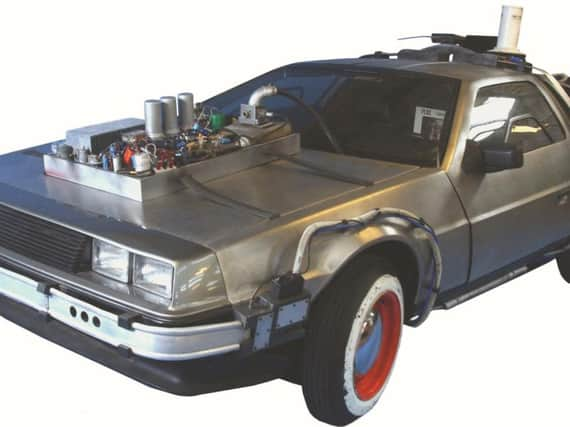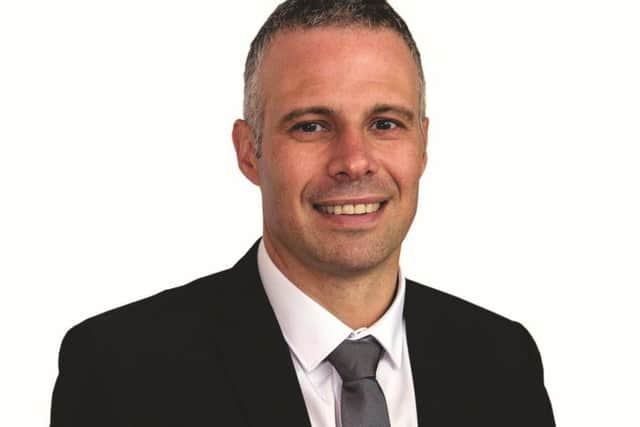The Marty McFly effect: sci-fi shaping Scotland's future


If you’re a fan of the three Back to the Future movies, as I am, you’ll know that was the response of the 1955 Doc Brown character in the first film on hearing the amount of electricity required to power his DeLorean time machine and successfully send the hero of the trilogy, Marty McFly, back to the year 1985.
Well, we’re a further 33 years on from then, and what was once science fiction is now real life. In fact SP Energy Networks has already connected seven gigawatts of renewable energy to its electricity network – thankfully, unlike Doc Brown, without the need of plutonium or a lightning strike. And the electric vehicles (EVs) on our roads don’t require anything like that kind of power to get where they need to go – even if we might wish sometimes that we could time travel just to avoid peak-time traffic.
EVs are becoming commonplace on our streets; there was a 90 per cent increase in their sales in August this year compared to last year, and the predictions are that the numbers will grow faster, especially as the Scottish Government has plans to phase out new petrol or diesel cars by 2032.


With EVs come EV chargers, and it is the job of SP Energy Networks to make sure that local electricity grids are able to meet the demand when people plug in their cars. We know that in Norway, EV sales went from 1 per cent to 33 per cent of vehicle sales in just three years. If that scenario is replicated in Scotland, and in 36 months 33 per cent of vehicles were to be electric, all plugging in to the grid to charge in the evening, then the demand that would put on the electricity grid would be far greater than peak demand at the moment.
So preparing for that prospect requires investment in the grid – and this means a financial outlay ahead of consumer demand so that people are able to charge their vehicles without impacting on the electricity supply of those who don’t have EVs. But it also needs innovation. We need to use the electricity grid in new ways, making sure it remains as secure and reliable as it is today.
SP Energy Networks is pushing the boundaries in terms of innovation. For instance, our Charge project could provide a co-ordinated and ultimately lower-cost solution for EV charging infrastructure. Meanwhile, our Fusion project in East Fife aims to develop an online market place where consumers can trade their flexibility by coming off grid at peak times and using their own stored energy from solar, heat pumps or even the battery in their EVs. And they would receive a financial boost from being so flexible.
EVs are only part of the electric revolution which is powering Scotland. We are moving to a low-carbon economy, and SP Energy Networks is keen to do our bit to tackle climate change, reduce air pollution, and ultimately deliver a better future, quicker.
To that end we have been working with the Scottish Government on how to help it meet targets, and with local authorities in Glasgow, Edinburgh and Liverpool, collaborating on their plans for low-emission zones and becoming “Smart Cities” – preparing for widespread EV use and new electric heating systems.
Of course it’s not just cities which face issues of growing congestion and concerns over air quality, or which have a need for ultra-fast communications and a desire to be part of the transition to low-carbon transport and heat. Scotland’s towns and our rural spaces also need safe, reliable electricity provision and the economic boost a low-carbon economy can bring.
Earlier this year, SP Energy Networks launched a ground-breaking £20 million Green Economy Fund, which could be a vital key to helping these communities tap into the electric revolution, ensuring that no Scottish community is left behind. The fund aims to assist projects, large or small, to get up and running and deliver the benefits of low-carbon heat or transport to communities across central and southern Scotland. Projects from the Borders to Glasgow, Ayrshire to Edinburgh have received money through the initiative.
We have funded the first EVs in car clubs in Hawick and North Ayr – areas where car ownership is low and public transport is not always reliable. Money was also found for a micro-hydro system which is set to be installed on the Water of Leith to power Edinburgh’s Saughton Park buildings and glasshouse. In addition, the first large electric buses will run in Glasgow, thanks to our funding and partnership with First Glasgow.
The good news is that the Green Economy Fund has now reopened for a second round of applications.
Without doubt it is an exciting time to be in energy. The journey to a low-carbon economy is picking up pace, and SP Energy Networks is ready to deliver.
Graham Campbell is general manager for SP Energy Networks’ Ayrshire and Clyde District.